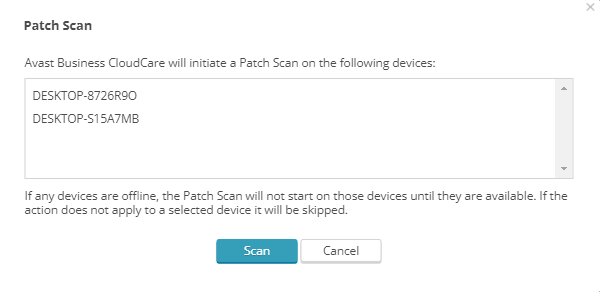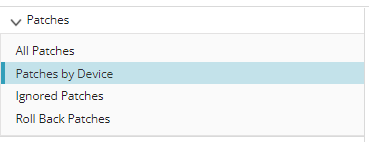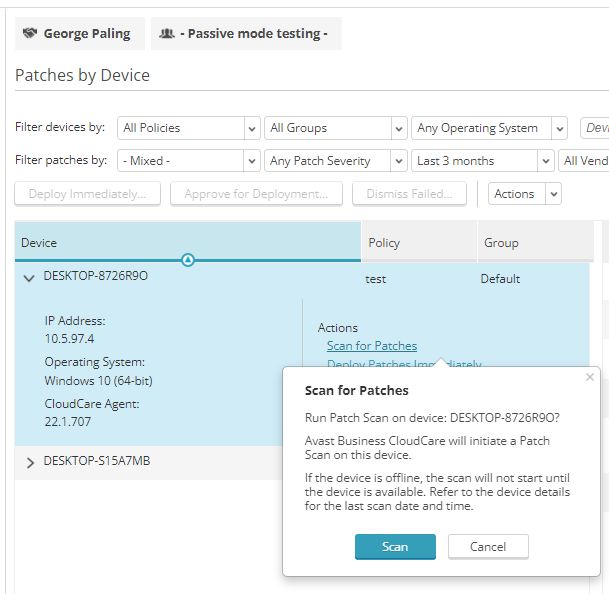PROXIMANOVA-LIGHT.OTF PROXIMANOVA-LIGHTIT.OTF PROXIMANOVA-EXTRABLD.OTF PROXIMANOVA-BOLD.OTFPROXIMANOVA-BLACK.OTF
Get this font in here!
This Article Applies to:
- Avast Business CloudCare
IMPORTANT: The CloudCare console does not support opening multiple tabs in the same browser session. Please use multiple browsers or incognito mode instead.
Tasks will only run on the assigned devices when those devices are online and communicating with the console.
Your devices must be scanned for missing patches before you can approve any deployments or ignore specific patches. Just as with patch deployment, you can choose to scan for patches automatically or manually.
The amount of time a patch scan takes depends on the number of patches being searched for and the number of devices being scanned. Once the scan is complete, any detected missing patches will be displayed on the Patches page.
To download the up-to-date list of all supported patches, click here.
Note that Patch Management does not support Microsoft ESU patches.
Automatic Scanning
The automatic patch scan checks all devices tied to a particular policy for missing software application updates (patches) on a recurring basis. After the scan completes, the results are displayed on the Patches page and under the Patch Results tab of each device that was scanned.
To configure automatic patch scans:
- Go to the Policies page (at partner level for master policies or customer level for customer policies)
- Select the desired policy from the left-hand pane
- Under Endpoint Protection, expand the Patch Management section
- Go to the Patch Settings tab
- Under Scan frequency, choose between daily, weekly, and monthly scans, and define the time of day you would like the scan to take place
- If you decide on monthly scans, please ensure the day of the month you’ve chosen occurs every month (for example, do not choose the 31st day of the month unless you specifically want to skip installing on months without 31 days)

Under Patch Deployment, you can also choose whether detected missing patches will be installed manually or automatically (see
Ad Hoc Scanning
If you would like to scan for patches manually, you can do so from either the Devices page or the Patches page.
Devices Page
To manually scan devices of a selected customer:
- Go to the Devices page at customer level
- Tick the checkbox(es) next to the device(s) you want to run the task on
- From the actions menu that appears at the bottom of the page, choose Patch Scan

- Confirm the action

You can also use the Patch Scan button above the device list when running a patch scan on all customer's devices.

Finally, you can run any task on a single device from the device's Detail page too.

Patches Page
To manually scan all devices of a selected customer:
- Go to the Patches page at customer level
- From the Patches section in the left-hand pane, select All Patches or Patches by Device

- Click the Run Patch Scan button
- Confirm the action

To manually scan a single device via the Patches page:
- Go to the Patches page (at customer level)
- From the Patches section in the left-hand pane, select Patches by Device

- Expand the device you want to scan
- In the Actions section, click Scan for Patches
- Confirm the action
